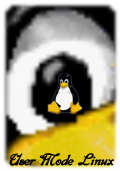IO memory emulation
| Driver interface |
Specifying an iomem region on the kernel command line is done as follows:iomem=name,fileThe name is defined by the driver that will use the I/O area and the file is the name of the host file that will be mapped in.The driver finds its I/O area by calling find_iomem
unsigned long find_iomem(char *driver, unsigned long *len_out)which returns the address of the beginning of the area and passes its length out in len_out. The driver argument is the name of the I/O area as defined on the command line.Once the driver has located its I/O area, it can do whatever it wants with it, including
- providing a file interface to it
- allowing processes to mmap it into their own address spaces
- use it as a backing store for some other kind of interface, such as an X server using it as a framebuffer and providing an X protocol interface to it
| The mmapper driver |
arch/um/drivers/mmapper_kern.c contains a simple example driver which locates the iomem area named "mmapper" and makes it available for mapping through /dev/mmapper. Here is a little program which will mmap the /dev/mmapper device and print its contents.To run this driver, compile it into the kernel by turning on CONFIG_MMAPPER, and assign a file to it by putting
iomem=mmapper,fileon the command line.
